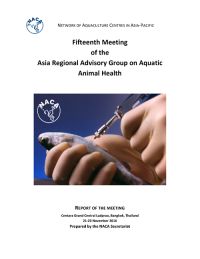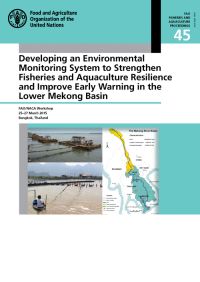Cambodians are among the largest consumers of fish in the world with per capita consumption of 63 kg/person/year. At present 90% of production is from freshwater systems. Low value "trash" fish from both freshwater and marine resources are used as an important feed input to the sector. Both imported pellets and on-farm feeds are of mixed quality, storage protocols inadequate and feeding strategies often wasteful. There is much scope to improve the efficiency of feed use.
Aquaculture production in Bangladesh is growing rapidly, resulting in increasing demand for feeds. In response, the government has formulated the Fishfeed and Animal Feed Act, 2010 and Fishfeed Rules, 2011, to assure the quality of feed inputs. The legislation mandates licenses for the establishment and operation of feed factories, for import/export of feeds and ingredients, and for sale of feed. Minimum minimum standards for feeds have been established and officials are empowered to test feed samples for compliance.
The Asia Regional Advisory Group on Aquatic Animal Health meets annually to discuss regional health issues including emerging disease threats. This report includes a review of regional disease status circa 2016, global and regional disease reporting arrangements, global issues and standards, progress in implementation of the the Regional Technical Guidelines on Health management for the Responsible Movement of Live Aquatic Animals, identification and designation of regional aquatic animal health resources and regional and international cooperation.
We invite you to join us for the 10th Symposium on Diseases in Asian Aquaculture (DAA10), the popular triennial event of the Fish Health Section of the Asian Fisheries Society (FHS-AFS), to be held from 28 August to 1 September 2017 at the Anvaya Beach Resort, Kuta, Bali, Indonesia.
With the chosen theme of “Enhancing Aquatic Animal Health Research and Services through Public-Private Sector Partnerships” we anticipate to cover topics from classic parasitic, bacterial and viral diseases to emerging trends and cutting-edge research in aquatic animal health.
Three satellite workshops: FAO’s Inter-regional Workshop, NACA’s Meeting of the Asia Regional Advisory Group on Aquatic Animal Health, and a Bioinformatics Workshop are being organised back-to-back with DAA10.
These are the proceedings of a consultation on the existence and effectiveness of environmental monitoring systems for fisheries and aquaculture in the Lower Mekong basin. The document provides a baseline assessment of environmental monitoring systems in Cambodia, Thailand and Vietnam and the report of a workshop to discuss the assessments findings and future steps towards an improved environmental monitoring and early warning system that will contribute to climate change adaptation in fisheries and aquaculture in the area.


